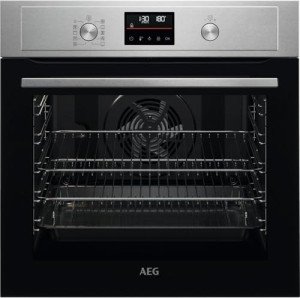Self-Cleaning Oven Reliability: Insights and Considerations
As modern kitchens increasingly welcome technology, self-cleaning ovens have actually gained appeal as a convenient solution to one of cooking's less glamorous jobs-- cleaning. These ovens simplify the post-cooking clean-up process, allowing house owners to operate their appliances with very little physical scrubbing. However, questions about the reliability and effectiveness of self-cleaning ovens remain amongst consumers. This article digs into the reliability of self-cleaning ovens, how they function, prospective disadvantages, and key factors to consider for potential purchasers.
How Self-Cleaning Ovens Work
Self-cleaning ovens utilize high temperatures to incinerate food residues and grease buildup. There are normally 3 kinds of self-cleaning systems:
- Pyrolytic Cleaning: This is the most common method, where the oven warms up to around 900 ° F( 482 ° C)for a number of hours to turn food residues into ash. After the cycle, the user merely wipes away the ash with a moist cloth.
- Steam Cleaning: This method utilizes steam and water to soften food residues, permitting easier manual clean-up. Typically, users require to fill a water reservoir and set the oven to steam-clean mode.
- Self-Cleaning through Chemicals: Some contemporary ovens included special cleaning solutions that make cleaning simpler without the requirement for incredibly high temperature levels.
Table 1: Comparison of Self-Cleaning Methods
| Approach | Temperature level | Period | Cleaning Result | Effort Required after Cleaning |
|---|---|---|---|---|
| Pyrolytic | ~ 900 ° F( | 482 ° C )2-4 hours Decreases particles to ash | Clean away ash | |
| Steam Cleaning | 212 ° F( | 100 ° C)30-60 minutes | Loosens grime for simple wipe | Clean wet residue |
| Chemical Cleaning | Differs | Differs | Assists in manual cleanup | Follow producer's guidelines |
Reliability of Self-Cleaning Ovens
Durability and Maintenance
One of the most substantial issues relating to the reliability of self-cleaning ovens is the wear and tear related to their high-temperature cleaning cycles. Though most modern-day ovens are developed to hold up against these severe conditions, repeated usage can cause:
- Component Stress: The high heat might impact the longevity of electrical parts.
- Door Lock Mechanism Issues: During the cleaning cycle, the oven's door locks to ensure safety, potentially resulting in malfunction if overly utilized.
User Experience and Effectiveness
Studies show that lots of users value the convenience of self-cleaning ovens however have reported combined results concerning efficiency. Elements that affect user satisfaction consist of:
- Type of Residue: Some residues, like burnt-on food, may need several cleaning cycles for extensive removal.
- Frequency of Use: Regular users typically report much better results after developing a cleaning regular compared to those who only tidy periodically.
- Oven Model: Advanced models with better insulation and technology tend to exceed older or base models.
Safety Considerations
Self-cleaning ovens must comply with stringent safety standards, yet users ought to stay watchful. Common concerns consist of:
- Heat Safety: During the self-cleaning cycle, the oven outside can end up being very hot, necessitating caution around little kids or family pets.
- Smoke Emission: For specific spills or residues, the high heat can produce smoke, potentially setting off smoke alarm. Users must make sure appropriate ventilation throughout the cleaning process.
Key Considerations Before Purchase
When contemplating the purchase of a self-cleaning oven, potential purchasers need to consider several aspects to make an informed choice:
- Cooking Habits: Assess how frequently meals are ready and the normal mess developed. Greater use might validate the investment in a self-cleaning design.
- Spending plan: Self-cleaning ovens normally have a greater price point compared to basic models. Assessing the budget plan is vital.
Size and Feature Set:
- Evaluate the offered space for the oven in the kitchen area.
- Identify whether additional features, like wise connections or particular cooking modes, will be helpful.
- Brand name Reputation: Researching brands understood for trustworthy performance can save future headaches. Self Cleaning Ovens Online can offer insights into long-term complete satisfaction.
Table 2: Considerations Before Purchasing a Self-Cleaning Oven
| Aspect | Recommendations |
|---|---|
| Cooking Habits | Consider your frequency of cooking and kinds of meals. |
| Budget | Make sure the cost lines up with your monetary strategy. |
| Size and Features | Examine cooking area dimensions and desirable features. |
| Brand Reputation | Research study consumer reviews and brand reliability. |
Self-cleaning ovens present a valuable option for those seeking to simplify oven maintenance. While they display numerous benefits, including time cost savings and reduced effort, reliability can differ based on use and oven model. Similar to any appliance, it is essential for consumers to carry out comprehensive research and examine their special cooking habits before buying. With the right factors to consider, a self-cleaning oven can significantly enhance a cooking area's convenience and efficiency.
Frequently asked questions
1. How typically need to I use the self-cleaning feature?It's typically advised to utilize the self-clean function once every few months, depending upon usage levels, to preserve optimum tidiness. 2. Can I clean up the oven
manually as well?Yes, manual cleaning is recommended if there are severe messes that require focusing. However, it may be less efficient than the self-cleaning feature for burnt-on residues. 3. Exists a risk of harmful my oven when using the self-cleaning feature?While rare, excessive or improper use of the self-cleaning cycle can lead to element wear and tear
. Following the maker's standards can lessen risk. 4. What need to I do if the oven door will not unlock after the self-cleaning cycle?If the door stays locked, it generally suggeststhat the oven is still cooling down. Wait until the temperature drops adequately(
usually about an hour) before trying to unlock it. If it remains locked for too long, consult the manual or contact customer assistance.

